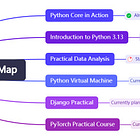SVM (Part 1): How to Separate Red and Blue Balls with a Stick?(Practical Data Analysis 16)
Learn SVM: Explore support vector machines for classification, pattern recognition, and regression with practical examples, including hard and soft margins and kernel functions.
Welcome to the "Practical Data Analysis" Series
Today, let me guide you through learning about SVM, which is short for Support Vector Machine.
SVM is a common classification method in machine learning, and it is categorized as a supervised learning model. What does "supervised learning model" mean?
It means that we need to label the data beforehand, so the machine knows which category each piece of data belongs to.
In contrast, unsupervised learning deals with unlabeled data. This might be because we lack prior knowledge or because labeling is costly.
In such cases, we need the machine to help us partially complete this task, such as clustering the data to facilitate manual analysis of each cluster afterward.
As a supervised learning model, SVM is often used for pattern recognition, classification, and regression analysis. Sounds impressive, doesn’t it?
Let’s start with a simple exercise:
Exercise 1
On the table, I’ve placed red and blue balls. Use a stick to separate the two colors.
You can quickly come up with a solution: draw a straight line between the red and blue balls, as shown below:






